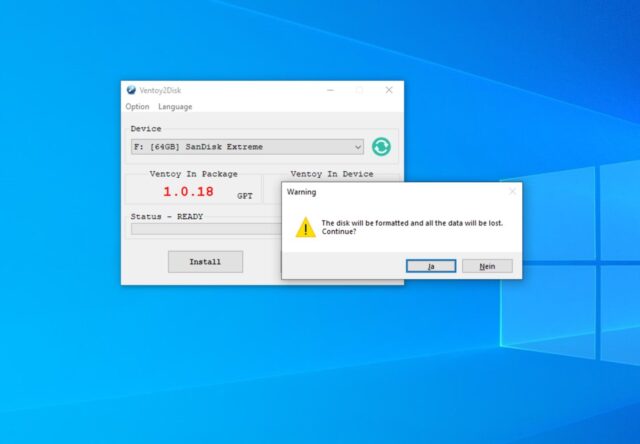

There is a mode of automatic installation of the operating system in a file on portable media with the ability to add your own files to the created environment (for example, to create images with Windows or Linux distributions that do not support live mode). In addition to USB media, the Ventoy bootloader can be installed on a local drive, SSDs, NVMe, SD cards, and other types of drives that use FAT32, exFAT, NTFS, UDF, XFS, or Ext2/3/4 file systems. Supports booting various versions of Windows, WinPE, Linux, BSD, ChromeOS, as well as Vmware and Xen virtual machine images.ĭevelopers have tested more than 940 iso images with Ventoy, including several versions of Windows and Windows Server, several hundred Linux distributions (90% of the distributions featured on are stated to have been tested), more than a dozen BSD systems (FreeBSD, DragonFly BSD, pfSense, FreeNAS, etc). Step 4: Run the following command to launch Ventoy webUI: $ sudo sh VentoyWeb.Windy supports booting into systems BIOS, IA32 UEFI, x86_64 UEFI, ARM64 UEFI, UEFI Secure Boot, and MIPS64EL UEFI with MBR or GPT partition tables. Step 3: Cd into the Ventoy directory: $ cd Downloads/Ventoy/ I have extracted it in a folder named "Ventoy" in Downloads directory. Step 2: Go to the location where you downloaded the Ventoy utility and extract it. As of writing this guide, the latest version was 1.0.50. Step 1: Download the latest Ventoy application from the releases page. Create Bootable USB Drive With Ventoy WebUI

I am surprised how much I like the simplicity of the Ventoy graphical user interface. The other day I tried the Ventoy WebUI in my Fedora Linux desktop. We can create bootable USB drives using Ventoy in Linux from commandline mode only.įortunately, Ventoy now ships with a web-based graphical user interface since version 1.0.36 and native GUI (GTK/QT) since 1.0.52. Initially, Ventoy doesn't have any graphical user interface for Linux platforms.
How To Create Multiboot USB Drives With Ventoy In Linux.For more details about Ventoy and its usage, refer the following link: No need to format the drive over and over. Just create the bootable USB device once and copy as many as OSes you want in the drive. It currently supports around 720+ ISO images including Linux, BSDs, Windows, VMware ESXi, and Citrix XenServer etc. Ventoy allows you to painlessly create Linux, Unix, and Windows bootable USB mediums from commandline as well as graphically.


 0 kommentar(er)
0 kommentar(er)
